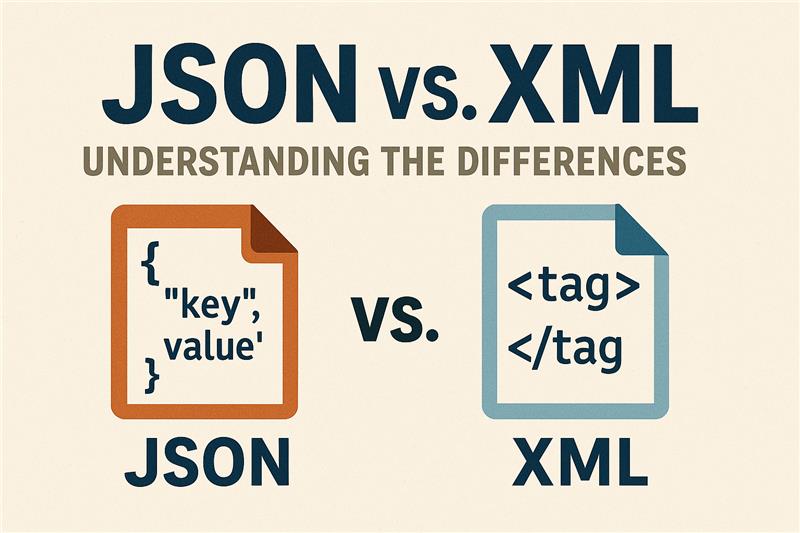JSON vs. XML: Understanding the Differences
In the world of web development and data exchange, JSON (JavaScript Object Notation) and XML (eXtensible Markup Language) are two of the most commonly used formats for storing and transmitting data. Both allow systems to communicate and share information, but they differ significantly in structure, usage, and performance. Understanding these differences is crucial for developers, data engineers, and business analysts to choose the right format for their applications.
What is JSON?
JSON is a lightweight data-interchange format that is easy for humans to read and write, and easy for machines to parse and generate. It represents data as key-value pairs, arrays, and nested objects. JSON’s syntax is concise, making it a popular choice for modern web APIs, mobile apps, and cloud applications.
Example of JSON:
{
“name”: “Alice”,
“age”: 28,
“skills”: [“Salesforce”, “JavaScript”, “Python”]
}
What is XML?
XML is a markup language that defines a set of rules for encoding documents in a structured, hierarchical format. XML uses tags to define elements and supports attributes for metadata. While more verbose than JSON, XML is very powerful and flexible, especially for document storage, configuration files, and SOAP-based web services.
Example of XML:
<person>
<name>Alice</name>
<age>28</age>
<skills>
<skill>Salesforce</skill>
<skill>JavaScript</skill>
<skill>Python</skill>
</skills>
</person>
Key Differences Between JSON and XML
| Feature | JSON | XML |
| Syntax | Lightweight, uses key-value pairs, arrays, and objects | Verbose, uses nested tags and attributes |
| Data Types | Supports strings, numbers, booleans, arrays, null | Everything is text; data types must be defined in schema |
| Readability | Highly readable and concise | Less readable due to verbose tags |
| Closing Tags | Not required | Required for every opening tag |
| Size and Performance | Smaller, faster to parse | Larger, slower to parse |
| Metadata Support | Minimal | Strong support via attributes |
| Validation | JSON Schema | XML Schema (XSD) |
| Namespaces | Limited support | Fully supported for avoiding name conflicts |
| Comments | Limited (// or /* */ in some parsers) | Supported (<!– comment –>) |
| Ease of Use | Easy to use in programming languages like JavaScript, Python, Java | Requires parsing libraries, more complex to work with |
Use Cases
JSON is ideal for:
- RESTful APIs and web services
- Mobile and web applications
- Lightweight data exchange between systems
XML is ideal for:
- SOAP-based web services
- Configuration and settings files
- Complex documents with metadata requirements
- Scenarios requiring strict validation and namespaces
Advantages of JSON
- Lightweight and faster to transmit
- Easy to read and write for humans and machines
- Maps directly to objects in most programming languages
- Simplifies integration for modern web and mobile apps
Advantages of XML
- Flexible and extensible with custom tags
- Supports rich metadata using attributes
- Strong validation using XML Schema (XSD)
- Widely used in legacy systems and enterprise integrations
Conclusion
While JSON and XML serve similar purposes of data exchange, the choice between them depends on your use case:
- Choose JSON for modern, lightweight, and efficient applications, especially when working with APIs and mobile apps.
- Choose XML when robust metadata, strict validation, and document-oriented structure are required.
In essence, JSON is developer-friendly and performance-oriented, while XML is powerful and flexible for complex enterprise systems.

